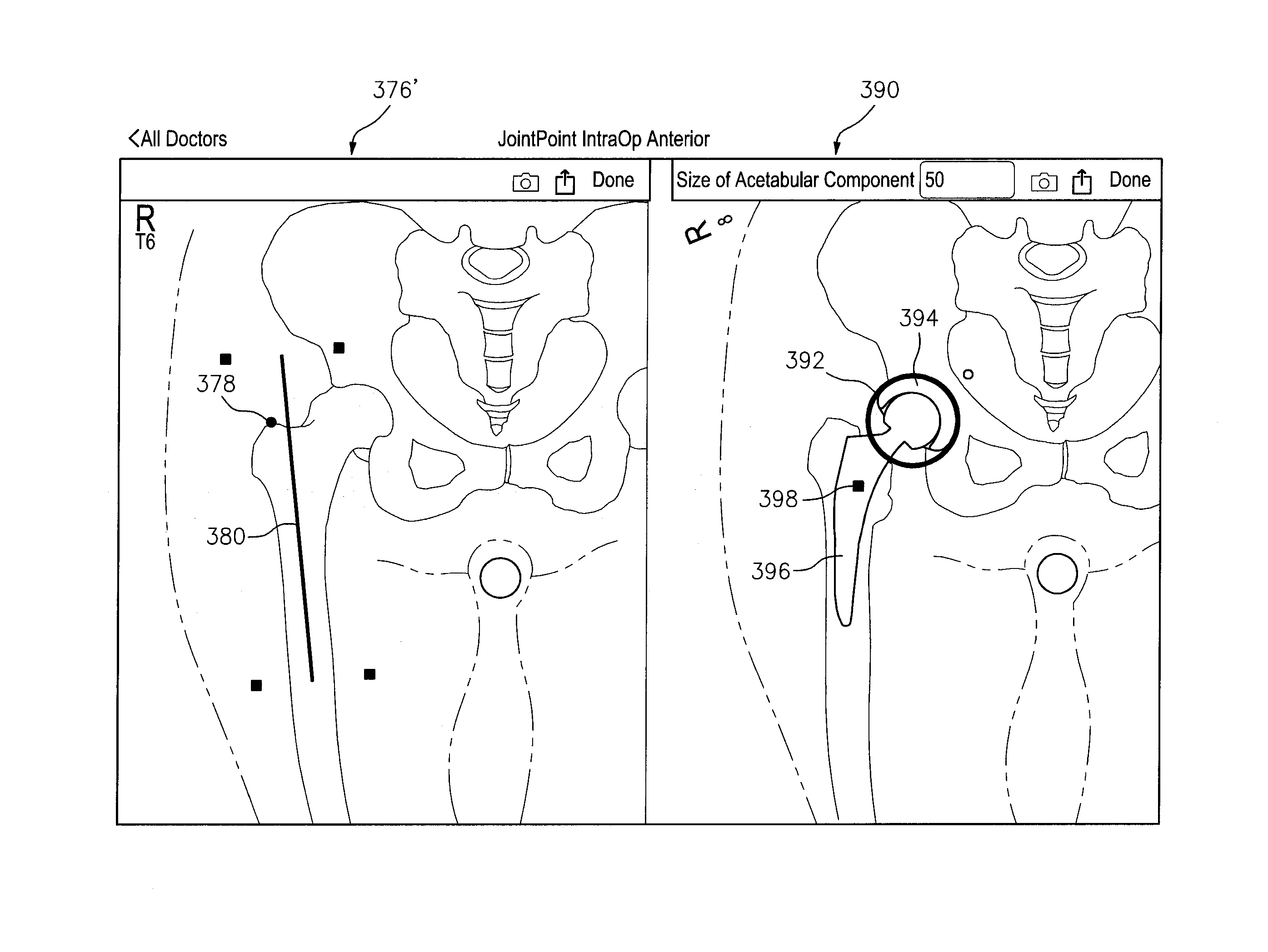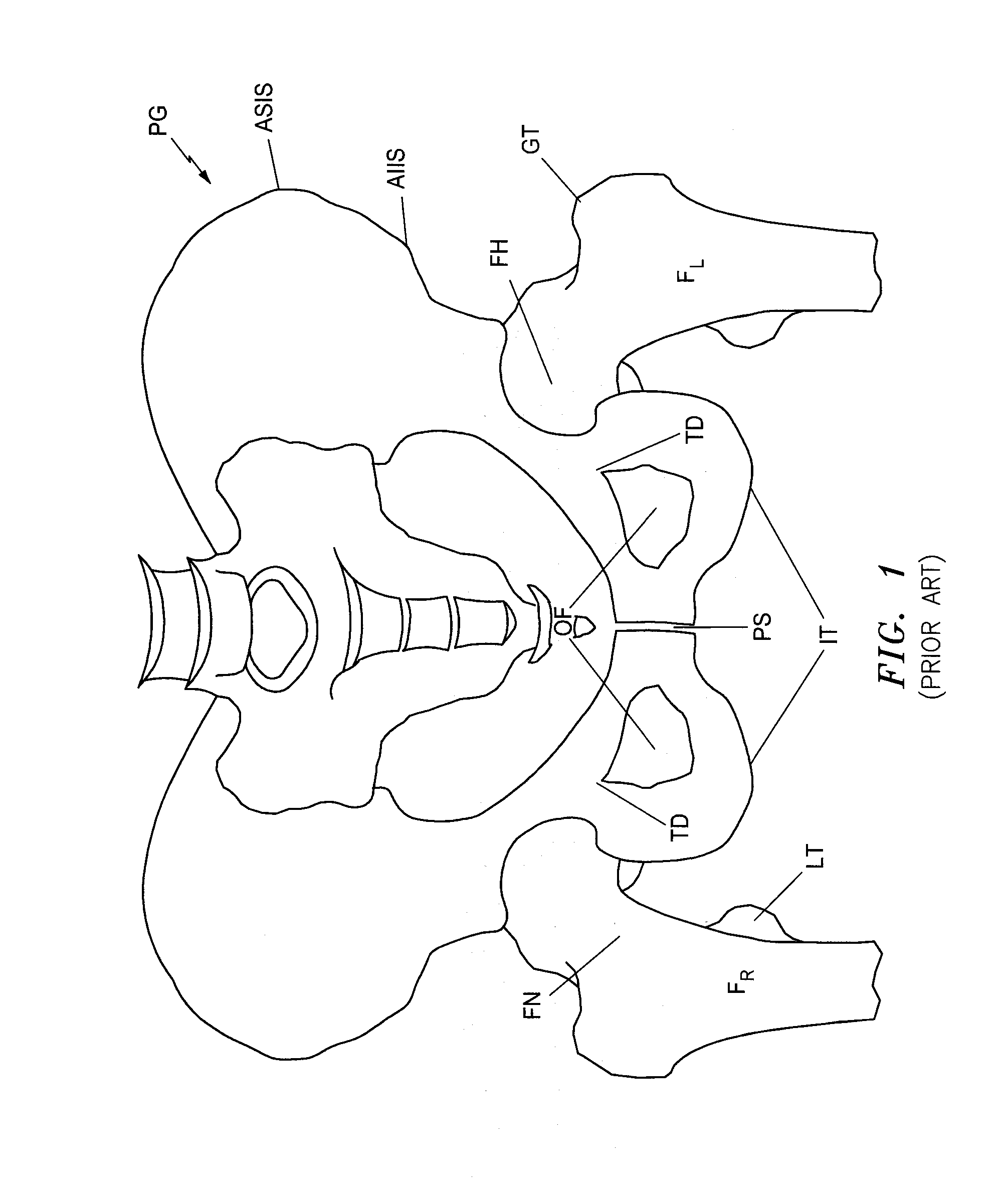Systems and Methods for Intra-Operative Image Analysis
a system and image technology, applied in the field of intraoperative image analysis, can solve the problems of limited adoption of systems, affecting patient satisfaction and implant longevity, and surgeons that do not use systems, so as to improve the outcome of bone repositioning, fracture repair, and/or fixation within a patient, accurate estimation
- Summary
- Abstract
- Description
- Claims
- Application Information
AI Technical Summary
Benefits of technology
Problems solved by technology
Method used
Image
Examples
Embodiment Construction
[0045]This invention may be accomplished by a system and / or method that acquire (i) at least one reference image including one of a preoperative image of a surgical site with skeletal and articulating bones and a contralateral image on an opposite side of the patient from the surgical site, and (ii) at least one intraoperative image of the site after an implant has been affixed to the articulating bone. The reference and intraoperative images are received and at least one reference landmark point is generated on at least one anatomical feature on the articulating bone, such as on the greater trochanter of a femur, in the reference image and at least one intraoperative landmark point on that anatomical feature in the intraoperative image. At least the first center of rotation of the implant is estimated in at least one of the reference image and the intraoperative image, and the longitudinal axis of the articulating bone is identified in each of the reference image and intraoperative...
PUM
 Login to View More
Login to View More Abstract
Description
Claims
Application Information
 Login to View More
Login to View More - R&D
- Intellectual Property
- Life Sciences
- Materials
- Tech Scout
- Unparalleled Data Quality
- Higher Quality Content
- 60% Fewer Hallucinations
Browse by: Latest US Patents, China's latest patents, Technical Efficacy Thesaurus, Application Domain, Technology Topic, Popular Technical Reports.
© 2025 PatSnap. All rights reserved.Legal|Privacy policy|Modern Slavery Act Transparency Statement|Sitemap|About US| Contact US: help@patsnap.com



